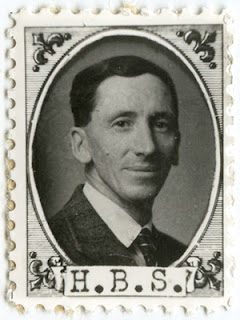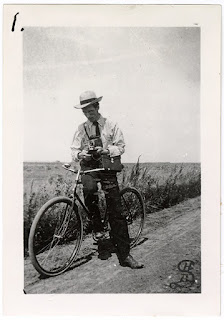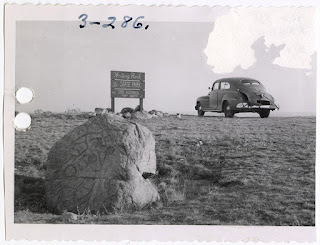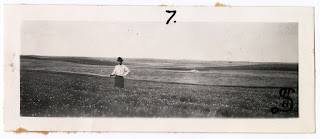By Micah Chang, PhD. candidate, Montana State University
Many Montanans perceive the Hi-Line as “drive-through country,” destitute of people and places. However, one glance at Henry and Edgar Syverud’s photo collection challenges that modern cultural stereotype. The Syveruds’ photo collection tells the story of hope and hard times on the Montana Hi-Line through a series of four volumes of scrapbooks, encompassing some 1,500 photographic prints, that track the two brothers awash in the tides of local, regional, and national history.


Henry and Edgar Syverud were born in Osnabrock, North Dakota, in the mid-1880s to Knute and Anne Syverud. Both brothers’ lives show their strong connection to Norwegian and Scandinavian ancestry through their immediate communities and worldviews evident in their photo collection. The two brothers were nearly inseparable from the start, both attending the University of North Dakota and then proceeding to homestead in northeastern and eastern Montana.


Both Syverud brothers cataloged their life’s journey through photography and scrapbooks. Edgar was the primary photographer for years, seemingly bringing his camera to every social event in the area. Henry made the scrapbooks, selecting photos and writing the captions and narrative history sections. They were heavily involved with their neighbors in what started out as the East Coalridge Community Club but eventually morphed into the local chapter of the Farmers’ Union. They were also a part of the development of a local Lutheran congregation. Lastly, the brother’s interest in and fascination with petroglyph rocks, which they called “The Writing Rocks.” led to the creation of Writing Rock State Park, which still exists today.

The brothers’ story reflects the larger history of the region. By the time both brothers were in their late teenage years, the Montana Hi-Line flooded with hopefuls—often immigrants, single males, and younger people—searching for a future by proving up a quarter-section of unbroken land. After the Enlarged Homestead Act of 1909 both brothers ended up in eastern Montana trying their hand at farming. However, after several years of successive drought and financial hardship, the brothers often found themselves deeply engaged in community activities and eclectic hobbies and side jobs. Through their photographs and scrapbooks the Syveruds created a narrative that shows how people persevered through drought, natural disasters, and failure by relying on their families and friends.

Aside from local history, the Syverud’s unintentionally created a photo archive that sheds light on important facets of regional and national history. The scrapbooks’ heavy focus on agriculture reveals the multiplicity of crops that the Syveruds and other homesteaders in northeastern Montana had to grow in order to achieve any semblance of profit. For example, the use of flax—one of the shortest-lived agronomic crops in Montana—dominates many of Edgar’s early photos of planting, harvesting, and threshing.

Photos from the first and second scrapbook volumes. and most of the third, are now digitized and available to those interested in the Syveruds’ story, and the history of homesteading in Sheridan County, Montana. Photos can be browsed and searched on the Montana Memory Project, specifically the MHS Photo Archives’ “Photographs from the Montana Historical Society.” Hundreds more Syverud photos will be added over the next couple months thanks to the continuing financial support of the Sheridan County Historical Association and the Montana History Foundation, in partnership with MHS.